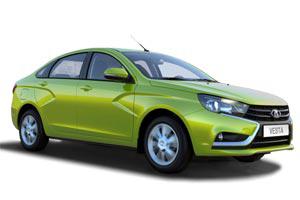Sun, 19 May 2024
Compare Peugeot 207 1.4 2-Tronic and Hyundai i30 (2017-2020) 1.6 CRDi (95 PS)
Technical specifications
| Clear list | Peugeot 207 | Hyundai i30 (2017-2020) |
| Totals | Peugeot 207 1.4 2-Tronic × | Hyundai i30 (2017-2020) 1.6 CRDi (95 PS) × |
| Mark | Peugeot | Hyundai |
| Model | 207 1.4 2-Tronic | i30 (2017-2020) 1.6 CRDi (95 PS) |
| Year | 2009 | 2017-2020 |
| Number of doors/seats | (3-5)/5 | 5/5 |
| Body type | Hatch | Hatch |
| Unladen Weight | 1196 | 1411 |
| Gross Weight Limit | - | 1860 |
| Top Speed, km/h | 180 | 186 |
| Acceleration 0-100 kph | 14 | 12.2 |
| Minimum turning radius, m | 5.4 | 5.3 |
| Cargo Volume, min/max, L | 270/923 | 395/1301 |
| Dimensions specifications, mm | Peugeot 207 1.4 2-Tronic × | Hyundai i30 (2017-2020) 1.6 CRDi (95 PS) × |
| Length | 4045 | 4340 |
| Width | 1748 | 1795 |
| Height | 1472 | 1455 |
| Wheelbase | 2540 | 2650 |
| Front/rear Track | 1475/1466 | - |
| Ground clearance | - | 140 |
| Engine specifications | Peugeot 207 1.4 2-Tronic × | Hyundai i30 (2017-2020) 1.6 CRDi (95 PS) × |
| Type | petrol Injection | turbo diesel Common Rail |
| Displacement, cm3 | 1361 | 1582 |
| Compression ratio | 11 | 16 |
| Number and arrangement of cylinders | 4 cylinders, in-line | 4 cylinders, in-line |
| The diameter of the cylinder x stroke, mm | 75х77 | 77.2x84.5 |
| Number of valves | 16 | 16 |
| Power, hp/rpm | 88/5250 | 95/4000 |
| Max torque, Nm/RPM | 133/3250 | 280/1500-2000 |
| Transmission specifications | Peugeot 207 1.4 2-Tronic × | Hyundai i30 (2017-2020) 1.6 CRDi (95 PS) × |
| Gearbox | 5-speed tiptronic | 6-speed manual |
| Drive Type | Front wheel drive | Front wheel drive |
| Suspension specifications | Peugeot 207 1.4 2-Tronic × | Hyundai i30 (2017-2020) 1.6 CRDi (95 PS) × |
| Front | MacPherson strut | MacPherson strut |
| Rear | Dependent suspensions (Torsion beam) | multi-link suspensions |
| Tire Size | 185/65/15 | 195/65 R15 |
| Disk | 4x108 ET27 d65.1
| 5x114.3 ET47 d67.1
|
| Brakes specifications | Peugeot 207 1.4 2-Tronic × | Hyundai i30 (2017-2020) 1.6 CRDi (95 PS) × |
| Front | Ventilated discs | Ventilated discs |
| Rear | Discs | Discs |
| Fuel consumption specifications, L/100 km | Peugeot 207 1.4 2-Tronic × | Hyundai i30 (2017-2020) 1.6 CRDi (95 PS) × |
| City | 7.9 | - |
| Highway | 5.1 | - |
| Combined | 6.1 | 3.8 |
| Fuel | 95 | Diesel |
| Tank, L | 50 | 50 |
| Clear list | Peugeot 207 | Hyundai i30 (2017-2020) |














